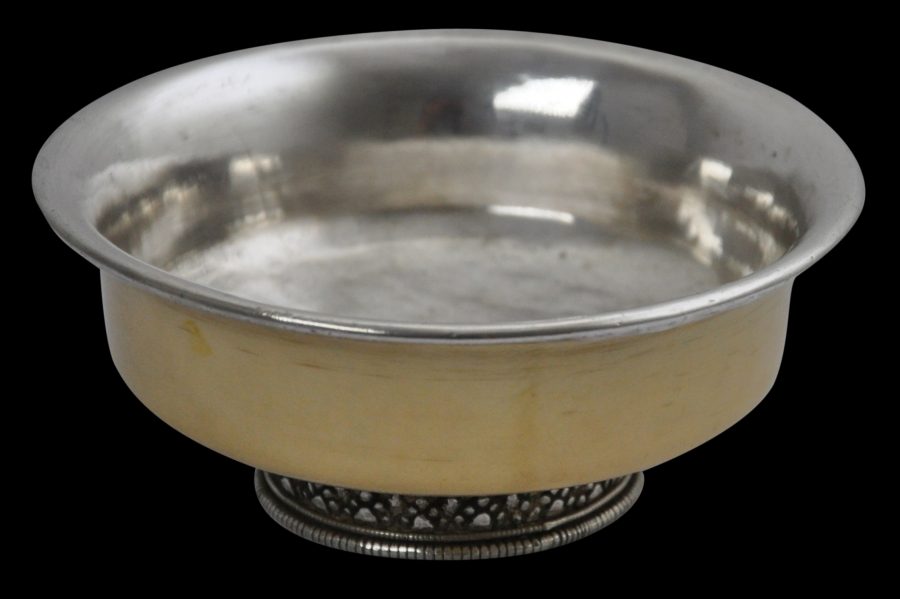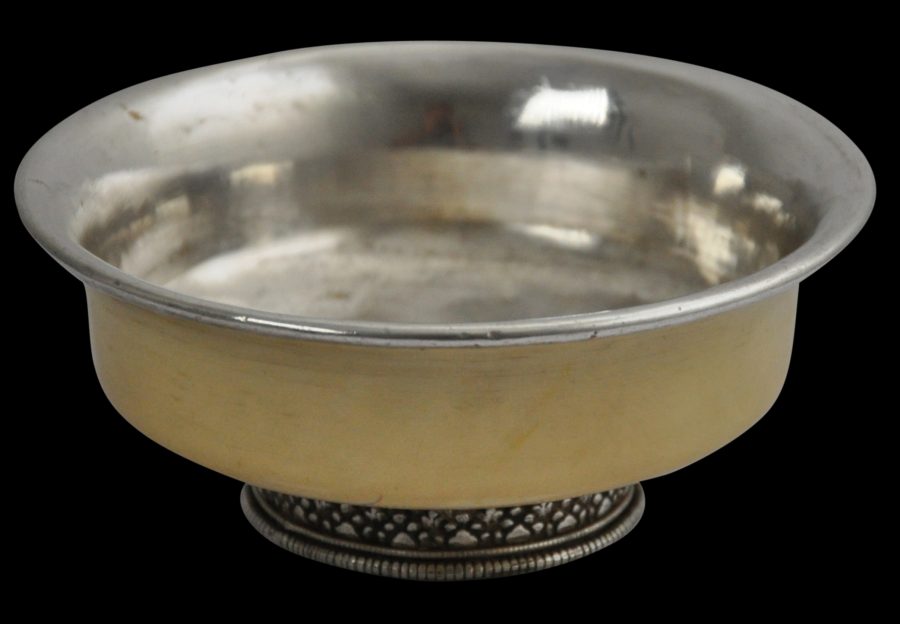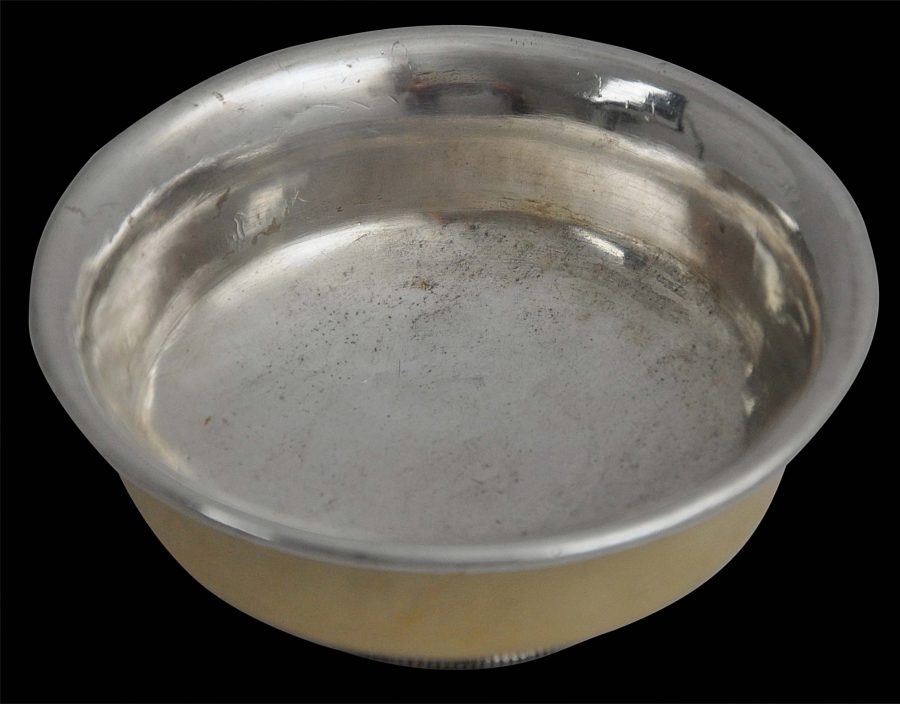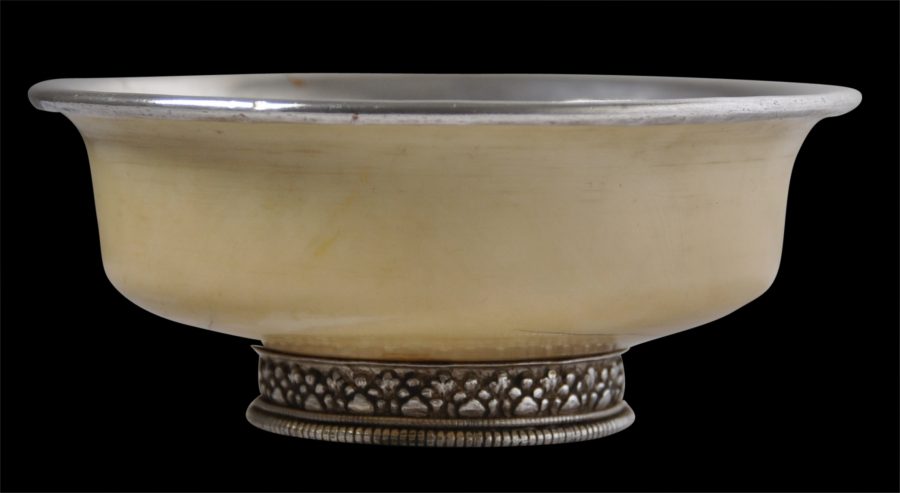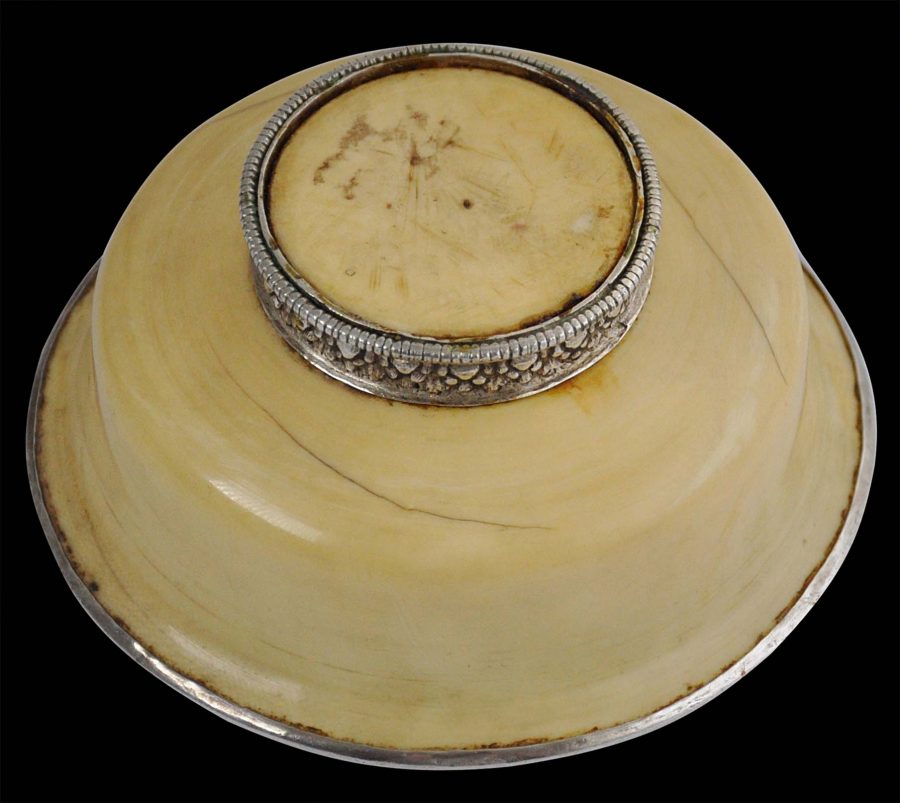This rare and beautifully proportioned tea bowl is of a single piece of turned ivory with sheet silver lining and a chased silver band running around the foot. The commissioning of such bowls was the prerogative of Bhutan’s royal family and the bowls were given as gifts by the court.
The tea bowl (por-pa) is one of the most common utensils among the peoples of Tibet and elsewhere in the Himalayas. But typically, they were made from turned wood. The finer examples were lined with silver. Silver leaves no aftertaste in the mouth and is second only to gold on the Himalayan-Buddhist scale of purity-pollution. Primarily, such bowls were used to drink brick tea blended with yak butter. The tea was pounded to break up the block, then boiled and blended with rancid butter and salt. Such bowls were rarely washed but were licked clean, usually using the tongue and lower lip.
An example is illustrated in Myers & Bean (1994, p. 123).
The example here has wear and patina consistent with age but otherwise is in excellent condition.
A later example of a Royal Bhutan ivory tea bowl displayed in the Indira Gandhi Memorial Museum and Residence in New Delhi, India. (Photographed in August, 2007).

References
Myers, D., and S. Bean (eds), From the Land of the Thunder Dragon: Textile Arts of Bhutan,Serindia, 1994.
Sheeks, R., ‘Tea bowls of the Himalayan and Mongolian peoples’, Arts of Asia, March-April 1992.


